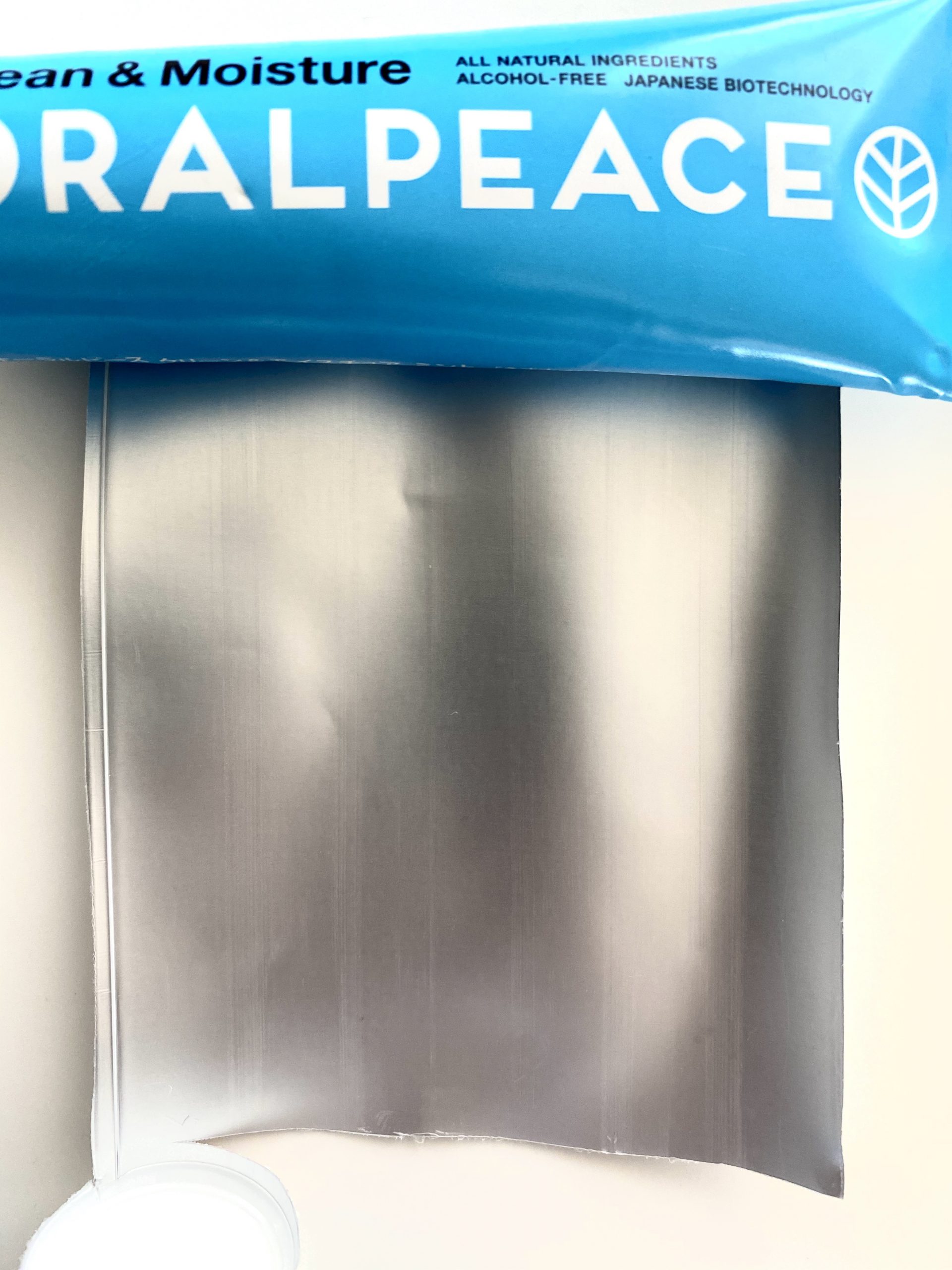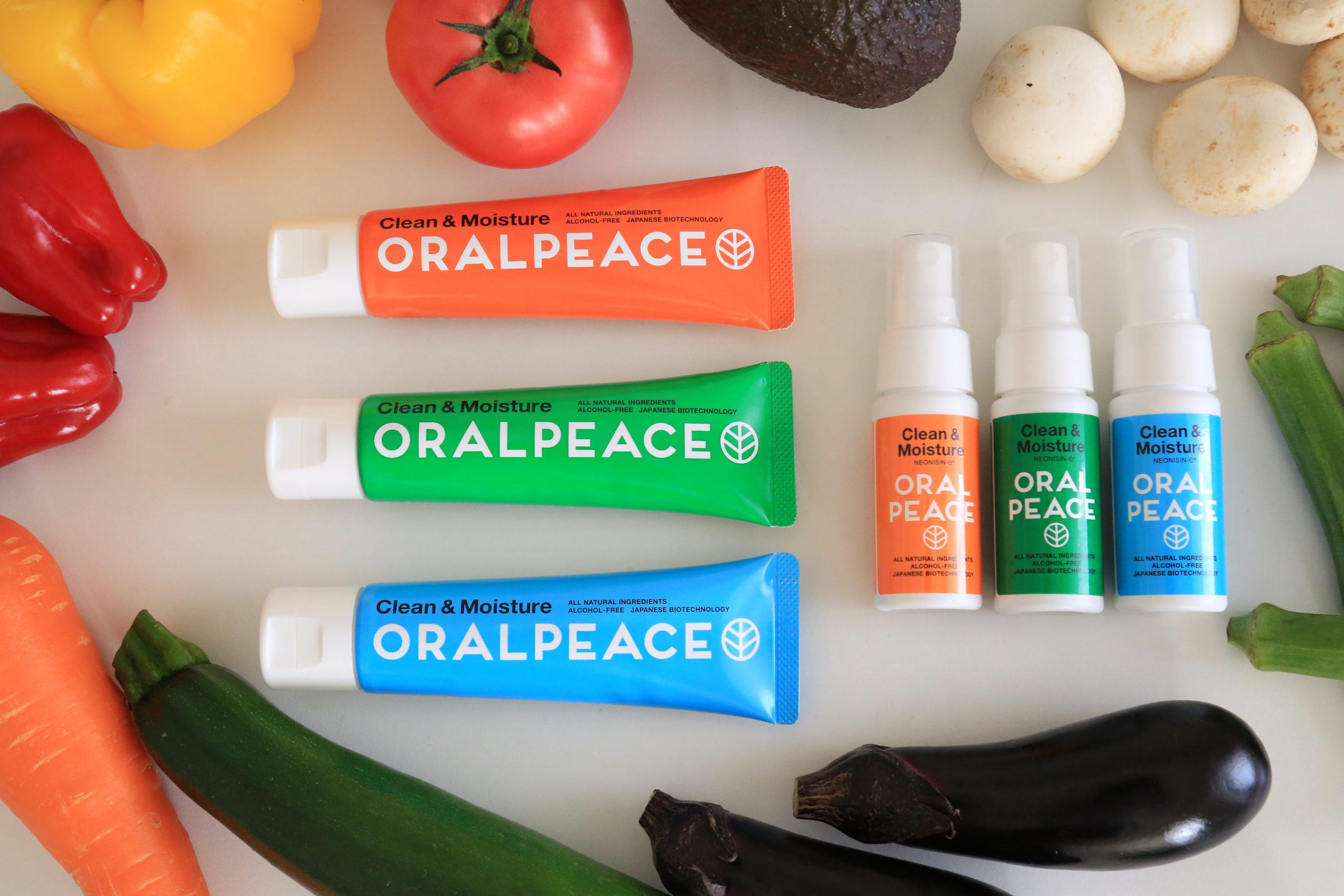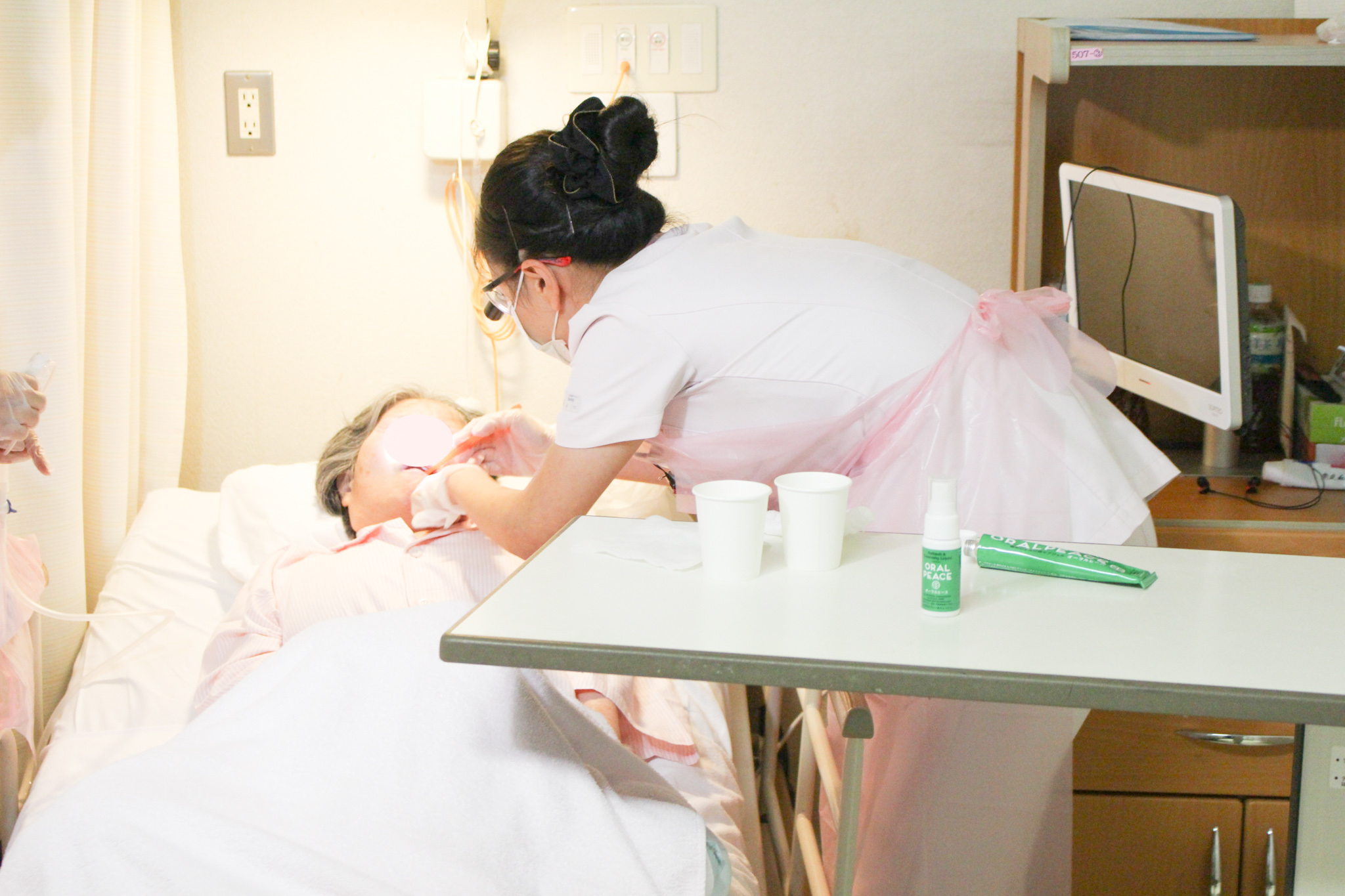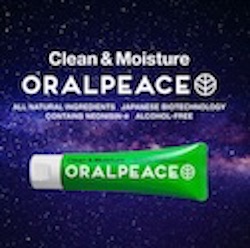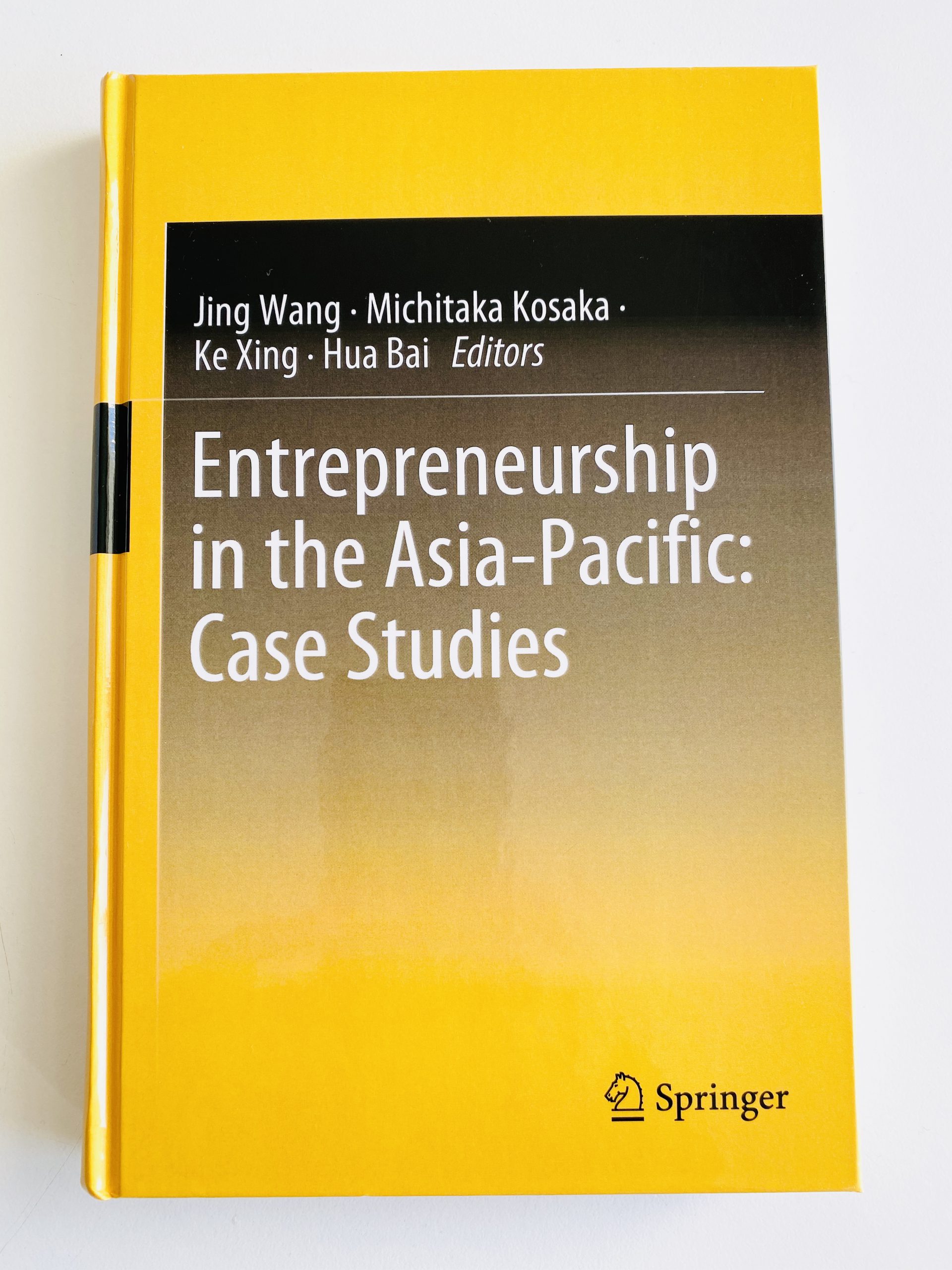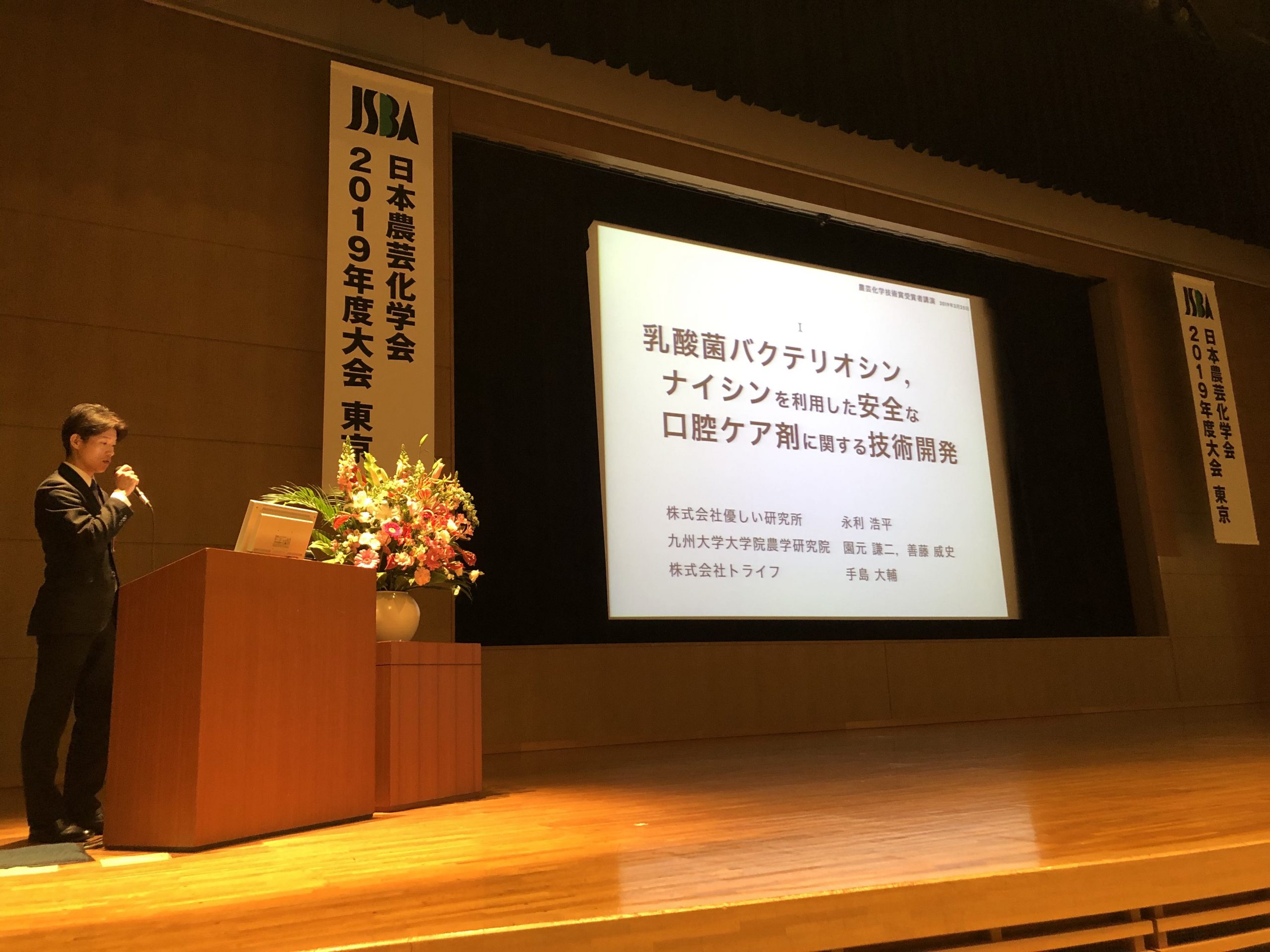NEWS
Importance of oral care in medical and long-term care settings
The number of elderly people requiring long-term care in Japan, which is aging the most in the world, is currently over 6 million, and the annual long-term care cost is over 10 trillion yen. It has become.
And in the future, the same aging problem as in Japan is expected on a large scale in the world.
According to a survey by the Ministry of Health, Labor and Welfare, the difference between the healthy life expectancy of living independently without long-term care and the actual average life expectancy is about 10 years, and there is an urgent need to shorten the period of bedridden long-term care required.
In recent years, the government has clarified the correlation between the number of remaining teeth and the incidence of dementia, periodontal disease bacteria and systemic diseases (myocardial infarction, diabetes, etc.) and developed the 8020 exercise to thoroughly implement oral care that leaves teeth and extends healthy life expectancy. We are promoting.
Needs for a new era of oral care products
However, in the field of medical care and long-term care, conventional oral disinfectants have a risk of causing stomach upset when swallowed by elderly people who have difficulty in gargling or spitting, and the burden on caregivers is still heavy with water-only care. ..
An oral care product that is safe to swallow while increasing the effectiveness and efficiency of care to reduce the physical, mental and time burden on the caregiver.
It is also useful for preventive care for dementia and healthy longevity for young people, and there is a need for oral care products with low environmental impact that are required in the new era.

The latest oral care methods in medical and long-term care settings
Regarding the latest oral care methods in medical and nursing care settings, Aimi Tsunoda, a dentist (Tokyo Medical Dental University) who is a leading expert in home dentistry in Japan and has the largest number of clinical cases in Japan, and is a member of the Oral Peace Project. In the book “Home Oral Hygiene Management Start Book” (published by Kuintessensu Shuppan) by Dental Hygienist) and Hisako Toki, basic knowledge, preparation, technology, positioning, various case-specific care methods, daily oral cavity The knowledge required in clinical practice from the basics to application of care guidance, multidisciplinary collaboration, and infection management is explained in detail from the beginning with pictures and illustrations.
We hope that medical and long-term care workers will refer to this and provide appropriate oral care.
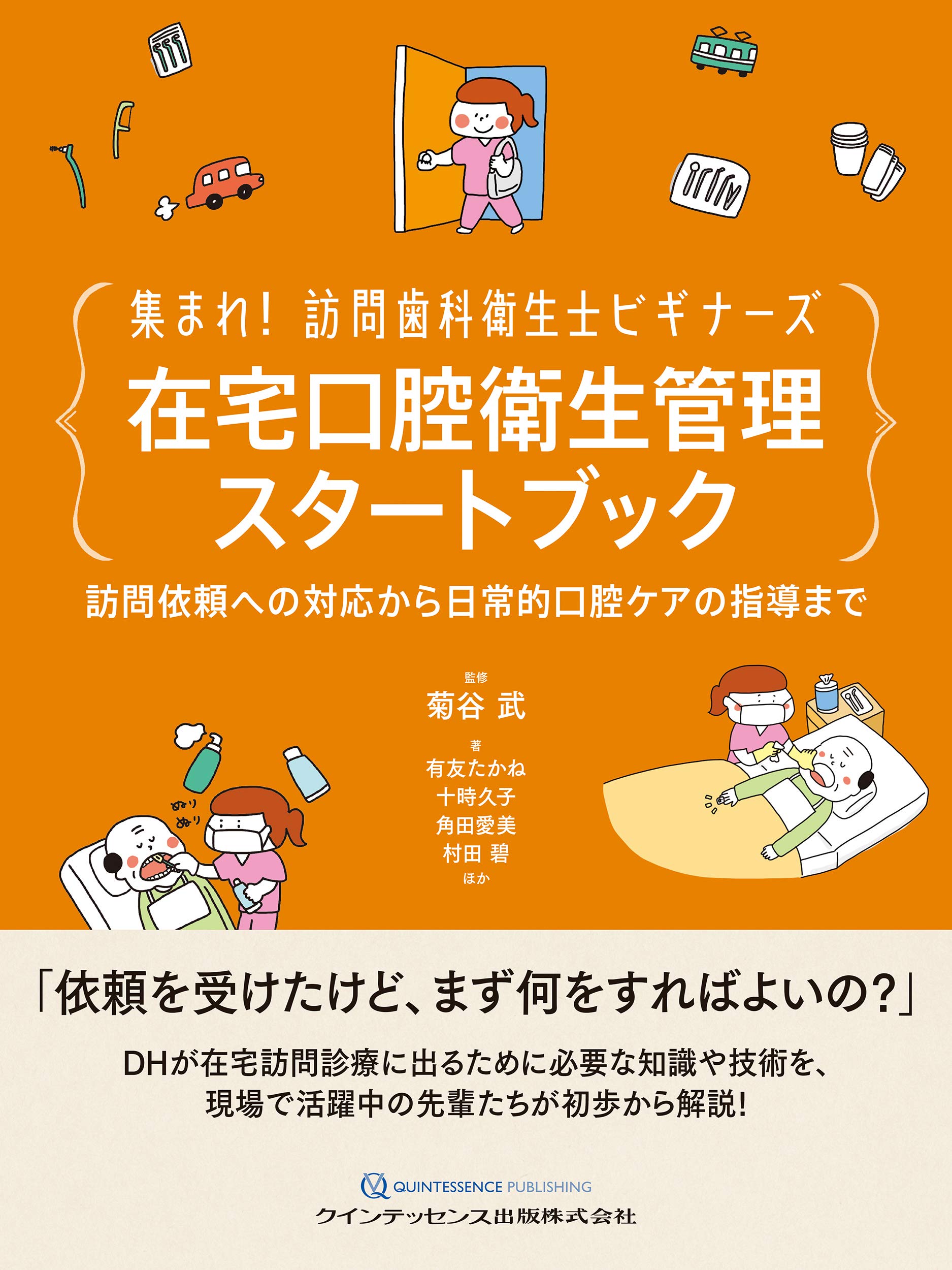
How to choose oral care products in the medical / nursing field
The first is the confirmation of “all ingredients”.
Whenever you purchase a product that creates your body and mind and puts it in your mouth, which is the gateway to all your important body and health, be sure to “all the ingredients” (all the ingredients that are blended and added). We recommend that you check and check for yourself before making a selection.
“All ingredients” can be found on the product packaging.
In many cases, it’s easy to get caught up in “other than the essence of the product.”
However, in the world of science, research, and manufacturing, all new efforts and efforts regarding research, technological innovation, and safety behind products result in the result of “all ingredients.”
It is important to check “all ingredients” and determine the essence of the product.
The second is confirmation of “research background” and “results”.
What kind of project members, universities / graduate schools and research institutes (national or private organizations / internationally competitive public institutions),
What kind of career and profile researchers (researchers who can have international competitiveness in their institution or specialized field) have researched and developed the technologies and products, and what they are researching for. Or
And does the research / technology have innovation and objective superiority (“patent”, “treatise”, “award history”, “newspaper publication”, etc.)?
is.
We are in an era where you can easily search for “research background,” “data,” “treats,” “patents,” “awards,” and “media publications” related to each product on the Internet.
It is important to identify the “research background” of what kind of research institution, researcher, involved members, etc., and what kind of “results” the research has achieved as a result.
Thirdly, what kind of research results and products are handled by the public media such as newspapers and television, and public media such as magazines.
Is it a research result or product that has news value and is treated as an article rather than an advertisement by highly reliable news media and public media?
Every day, we receive press releases from numerous research institutes and companies, and what is published and reported through the filter of reporters who are exhausting is a new socially useful research result for many consumers without specialized knowledge. It is a big factor in determining whether a product has unprecedented value.
Fourth, what kind of medical institution / store is selected, and what kind of countries are sold and used?
For stores such as highly reliable medical institutions and department stores, medical professionals who select various products in the world at their own risk and provide patients and customers with products that their hospitals and stores can proceed with confidence. There is a buyer (purchasing person).
Now that there are so many things and information all over the world, there are stores with high quality that consumers are sure to buy here.
Being selected by these medical institutions and department stores is a product that should be selected, trusted, and recommended to important patients and customers by the filters of connoisseurs who are looking at products all over the world. It will be a thing.
In addition, in order to be officially sold locally not only in Japan but also in overseas countries, it can be sold for the first time after strict approval by the health institutions of each country.
Products that are officially sold locally are products that have been carefully examined in each country and that should be used as contributing to the health of the people.
What kind of medical institution, government agency, public institution, what kind of department store or store should choose the product to choose?
Is it a product that is sold not only in Japan but also in the United States, Europe, China, Asian countries, Central and South America, and other countries around the world? And is it a product that many people around the world are looking for?
For many consumers who do not have specialized knowledge, calmly knowing the handling and sales performance of the product, the difference from other products in the world, the essence of the product, the superiority of research and technology, the product to choose It is an element to judge the goodness.
Finally, confirmation of “sociality”.
Whether it is a product or business that leads to good things not only for you but also for society and others, a product that prioritizes human health and environmental consideration, a product for mere commercial purposes, or social It is important to find out if the product you are working on.
We are in an era where you can easily find out about the actual situation and management attitude of the above companies on Wikipedia.
It is important for medical professionals and consumers to wisely assess the “sociality” of products and companies, not just the product specifications themselves.
Now that various information is overflowing and companies and products are overflowing, in order to protect the health of ourselves, our families and patients, and to protect our own health and livelihood, we must be able to discern and judge the essence. We are in an era of demand.
In the era after the coronavirus disaster, which has changed drastically, medical professionals and consumers learned about how corporate products lead to better things for society and themselves, and the socio-economic mechanism. We need to make wise choices.
Selection points for oral care products, oral hygiene agents, and oral moisturizers
The “selection points for oral care products, oral hygiene agents, oral hygiene agents, oral moisturizers, and oral care products” that are expected to have the function of performing oral care and moisturizing at the same time can be said to be as follows.
First and foremost, try tasting yourself. With this, you can understand most of the differences, such as “feeling whether it is a safe ingredient even if swallowed as it is”, “feeling whether it feels good or bad when you put it in your mouth”, “feeling the effect of using it”. I will.
Secondly, it can be important to check whether or not “ingredients that are expected to have antibacterial properties that are safe to swallow” are included.
In order not to increase the number of bacteria that cause troubles in the oral cavity, simple moisturizers (gels such as glycerin and hyaluronic acid) cannot meet the needs of clinical practice, and “products containing antibacterial agents that are safe to swallow” are the oral cavity. It is considered to be highly useful for cleaning, moisturizing, and keeping the inside clean.
The third major point is the feeling of use by the patient.
Non-food products containing a large amount of chemical components such as synthetic thickeners and synthetic polymers have low raw material costs, but have drawbacks in terms of usability and water solubility. In other words, it remains like a foreign substance in the mouth and makes me feel uncomfortable. For example, it feels like petrolatum, lard, and paint are stuck in your mouth all the time.
You can also check the water solubility of each product at home.
Add a small amount of the product you want to compare with a petri dish (a small plate is fine).
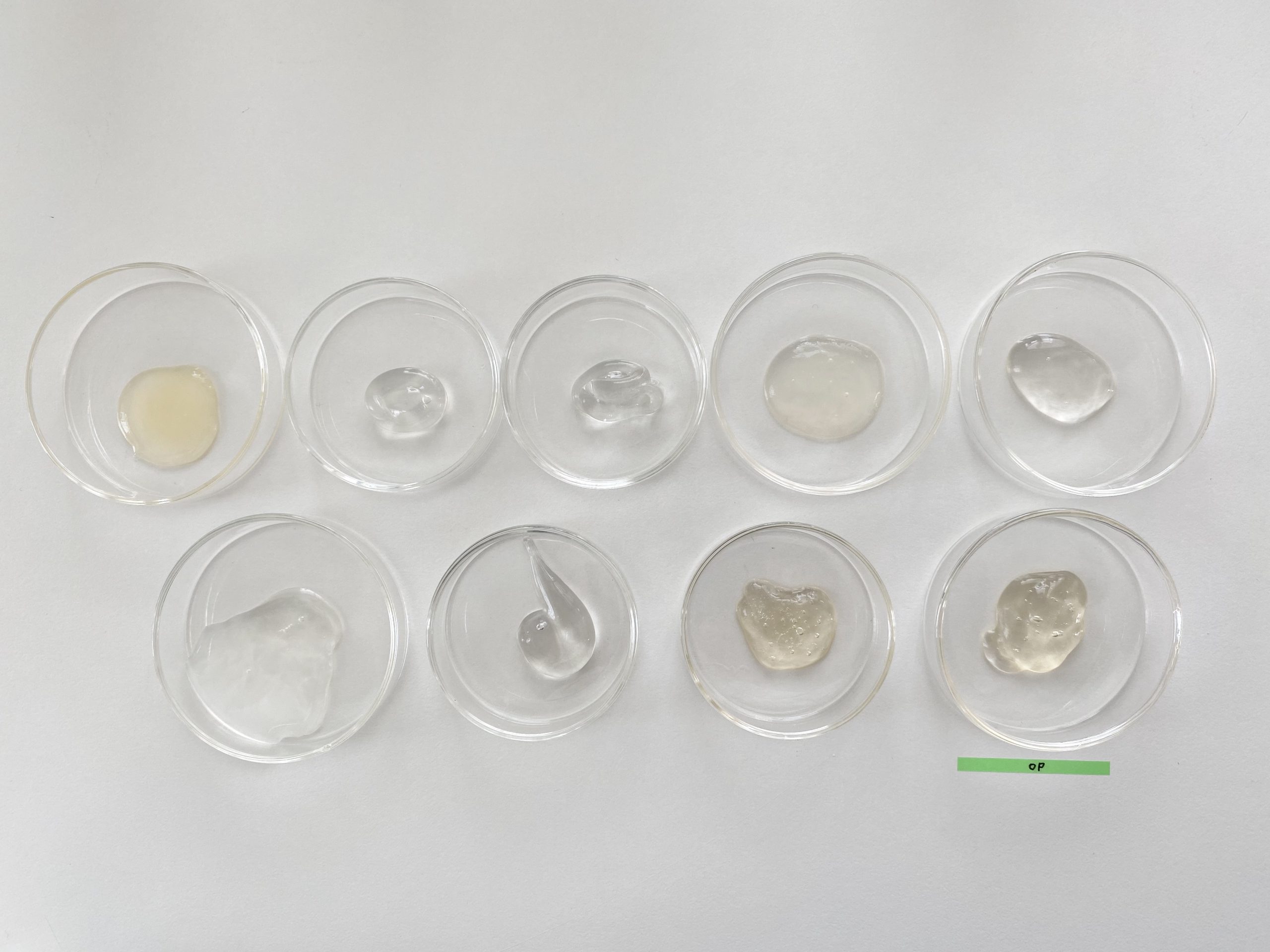
After that, add water and leave it for about 1 hour.
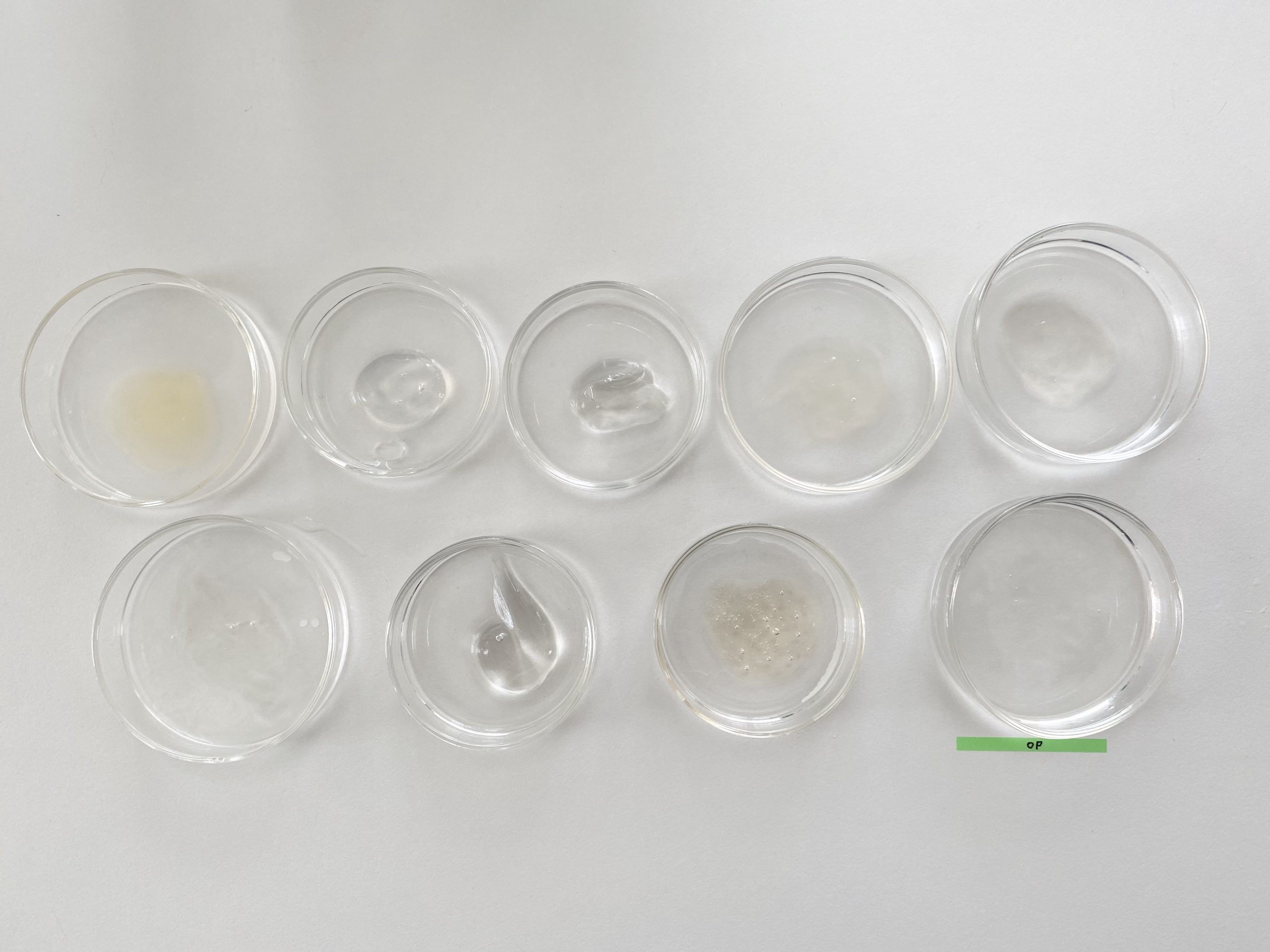
Finally, flush the water and observe the condition of the remaining wetting agent.
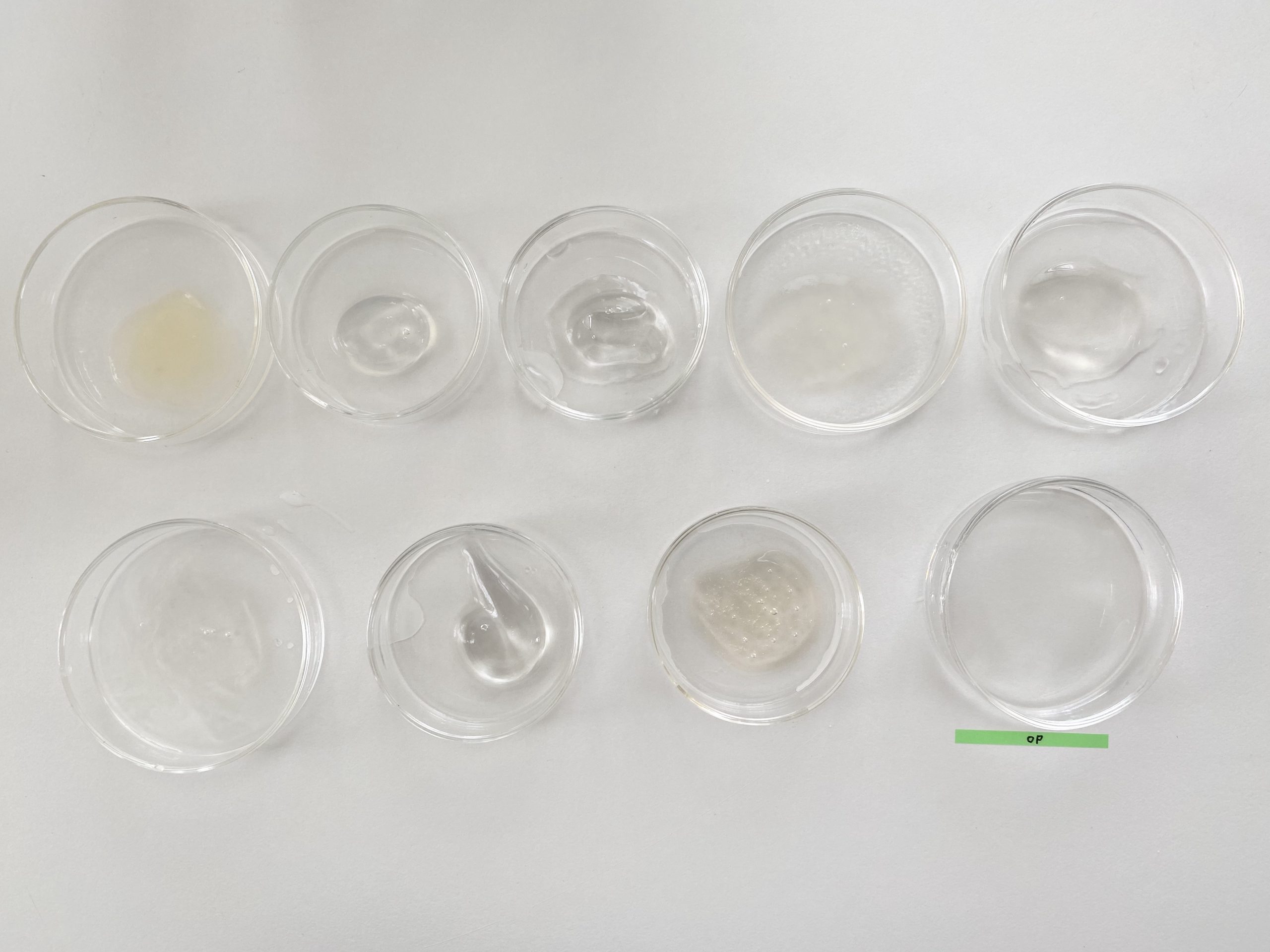
Anything that remains undissolved will feel like it sticks to the upper jaw. There are types that remain almost as they are even with water (saliva), and types that naturally blend in with water (saliva) and spread thinly to moisturize, such as Oral Peace Clean & Moisture.
Hard-to-dissolve substances that use a lot of chemical raw materials are difficult to digest in the human body and decompose by microorganisms in the intestinal tract, and even if they are excreted in nature, they are difficult to decompose and are difficult to biodegrade by microorganisms.
Whether it feels like it doesn’t dissolve in saliva and remains in the mouth, or it feels like it spreads in the mouth and is moisturized without discomfort. We recommend that you choose the best product.
It is important to fully understand the research and development background of each product and its characteristics such as usability, and to select a product that meets the needs of the user.
About ingredients and additives of oral care products
For toothpaste and oral care products as delicate products to be put in the mouth, it is also important to check the composition of the following ingredients and additives.
×Ingredients that are not approved for food that can be taken into the mouth
×Alcohol (ethanol, cause of dry mouth/avoidable for infants)
×Petroleum-derived ingredients
×Chemical substances
×Forever Chemical (PFAS)
×Cyanide(potassium cyanide, etc., poisonous substance, substance not permitted for food, substance prohibited from being released into the environment in ppm units)
×Potassium thiocyanate(Thyroid side effects,hazardous substance, substance prohibited from being mixed into food or released into the environment in ppm units, regulated by the U.S. Environmental Protection Agency in 2011, regulated by the European Union in 2014, and regulated by the Japan Ministry of Health, Labor and Welfare for hypothyroidism in 2021, the Japan Ministry of the Environment will classify it as an endocrine organ disruptor and prepare for regulations.)
×Hydrogen peroxide
(deleterious substance, residual unlicensed substance in food, prohibited in Japanese toothpaste products in ppm units)
×Enzymes such as lactoperoxidase and glucose oxidase that cause a chemical reaction with hydrogen peroxide and thiocyanate in the oral cavity to generate cyanide and sterilize E. coli(Japan Ministry of Health, Labor and Welfare and Ministry of the Environment impact risk)
×Potassium iodide (Iodine, disinfectant, risk of side effects such as iodine poisoning and thyroid dysfunction)
×Formaldehyde (poisonous substance, bactericidal agent, there are cases where it is added to imported products in ppm units for antibacterial purposes due to carryover of preservatives from raw materials)
×Synthetic fungicides that disrupt the intestinal flora, which is the source of immunity, and are toxic in nature when released into the environment
×Synthetic disinfectants such as cetylpyridinium chloride (also known as cetylpyridinium chloride, CPC), benzethonium chloride, benzalkonium chloride, chlorhexidine gluconate, IPMP (isopropylmethylphenol), triclosan, methyl salicylate, lauroylsarcosine salt (LSS), etc.
×Chlorine, chlorine dioxide (CIO2), sodium chlorite, sodium hypochlorite, chlorine gas, etc. (deleterious substances, dangerous substances, bleach, pool disinfectants)
×Na hydroxide/K hydroxide (deleterious substance, caustic soda/potassium, strong alkali, biohazardous, corneal damage observed with 2% solution, prohibited substance remaining in food)
× Strong alkaline electrolyzed water (although it is water, it is strongly alkaline and there is a risk of damaging the oral cavity and visceral mucosa and diluting stomach acid if swallowed accidentally, so it is not used for oral care in medical care settings)
×Water-soluble synthetic polymers such as carbomer, sodium polyacrylate, and hydroxyethyl cellulose (liquid microplastics, may impede skin breathing, and are difficult to decompose in the environment as nanoplastics, posing risks to seafood and the body)
×Fluoride (European Union suggests an impact on children’s IQ and reproductive function; in the United States, the safe exposure limit for fluoride is 0.12 mg/kg body weight/day)
×Titanium dioxide, TI dioxide, titanium oxide, TI oxide (coloring agent, bleach, suspected of carcinogenicity, French government has banned its inclusion in food from 2020)
×Phosphorus (phosphates such as polyphosphoric acid, metaphosphoric acid, pyrophosphoric acid, bleach)
×Aspartame (artificial sweetener, WHO suggested it may be carcinogenic in 2023)
×Artificial sweeteners such as sorbitol, sucralose, maltitol, erythritol, and saccharin sodium (effects on intestinal bacteria, etc.)
×Xylitol (effect on intestinal bacteria)
×Paraben (paraoxybenzoic acid ester, methylparaben, butylparaben)
×Phenoxyethanol (synthetic preservative, substance not permitted for food)
×Sodium benzoate (synthetic preservative)
×Sorbic acid potassium (synthetic preservative)
×Pentylene glycol (synthetic preservative)
×Glycine (preservative/food additive chemically synthesized from formaldehyde and hydrogen cyanide)
×Poly-ε-lysine (polylysine, an antibiotic analog produced by fungi-like actinomycetes, preservative and food additive)
×Synthetic surfactants and foaming agents such as sodium lauryl sulfate, lauryl glucoside, cocamidopropyl betaine, and sodium cocoyl glutamate that pose risks of swallowing and environmental pollution.
×Soap base, soap such as coconut oil fatty acid K, olive fatty acid K, etc., foaming agent
×Abrasives (stones, microplastic beads, mud, salt, etc.) that can be swallowed, accumulate in the gums, or abrade too much enamel and risk hypersensitivity.
×Calcium carbonate (Ca carbonate, large-particle abrasive, limestone powder, powder for drawing white lines on playgrounds, raw material for chalk), zeolite (zeolite), sodium bicarbonate (baking soda), coral powder, shells, Abrasives (compound, stone powder, etc.) such as mud (clay, montmorinite), charcoal, microbeads (plastic), etc.
×Large amounts of hydroxyapatite (risk of absorbing and sterilizing microorganisms in septic tanks and sewage treatment plants when discharged into the environment; risk of environmental pollution when discharged into the natural world)
×Strong synthetic fragrances and chemical fragrances that can disguise signs of illness such as bad breath (treatment of the affected area is necessary for health)
×Chemical substances whose names are hidden and only written as “fragrances” and “preservatives” (medicinal and quasi-drugs are not required to list all ingredients, and display names and INCI names can be hidden)
×Synthetic fragrances and flavors such as grape and cola made from chemicals
×Solubilizers such as PEG (polyethylene glycol) and propanediol
×BG (butylene glycol) ×PG (propylene glycol)
×EDTA-2Na × etidronic acid × phytic acid × nanoparticles
×Synthetic colorants made from petroleum tar raw materials such as Blue No. 1 and Yellow No. 2
×Metals such as copper and silver, heavy metals, heavy metals
×Poisonous components of animals and plants (natural poisons) × Aconite (alkaloids)
×Essential oils and resins with distilled and concentrated plant toxicity ×Tea tree essential oil
×Hinokitiol (teratogenic risk, avoid for pregnant women and girls)
×Pine tar × Japanese cedar resin × Mastic resin × Eucalyptus essential oil × Wintergreen essential oil × St. John’s wort
essential oil
×Yucca Schidigera extract (complex mixture of compounds, 2021 EU/European Food Safety Authority has determined that the effects of triterpenoid saponin and steroid saponin mixture (thyrotoxicity and male reproductive toxicity), serious skin and eye (suggests irritation and effects on aquatic organisms)
×Indigestible dextrin × Catechin × Tea leaves × Caffeine × Salt/Sea salt
×Insects, larvae, caterpillars, insect eggs, insect-derived raw materials × Honey, propolis × Saliva × Body fluids × Feces
×Animal-derived materials that sacrifice the tiny lives of other animals, such as bird eggs and animal placentas
×Animal-derived lactic acid bacteria (lactic acid bacteria derived from human/animal feces, intestinal tract, oral bacteria, dental plaque, etc. are not used)
×Lactic acid bacteria itself (no combination of live bacteria or dead bacteria, no evidence data on the immediate effect of lactic acid bacteria itself on oral bacteria)
×Limited natural biological raw materials such as corals in the marine environment
×Chemical substances that are toxic to the natural environment and biological ecosystems in the rivers and soil where they are discharged, and that indirectly affect human health from edible seafood and agricultural products.
×Chemical substances that the World Health Organization is considering regulating in the future due to their negative effects on the human body and the environment
Whenever you purchase a product that you can put in your mouth, we recommend that you check the “all ingredients” (all the ingredients that are included) of each product before making your selection.
Also, some Internet search services are capable of various information manipulations such as SEO to prevent consumers from knowing the truth, so the same content can be used on new AI question answering services, etc.We encourage you to investigate the truth for yourself.
How to choose a container for oral care products
Tube packages for oral care products are mainly available in plastic tubing, aluminum tubing and laminated tubing types.
Plastic tube / container (made of only plastic, the contents that have come out will return, air will enter inside the empty container, and there will be a gap, and if you see through the sun, the remaining amount of contents can be seen through) , “Very cheap”, “Can be opened with one hand”, but “Low confidentiality, easy to putrefy, need to mix a lot of synthetic preservatives”, “The contents cannot be kept light-shielded There is a demerit that “the components of the material tend to deteriorate”.
The advantage of the aluminum tube type is that it has a high airtightness and light-shielding property, and the contents once stepped out do not return, so it has the advantage of “maintaining good hygiene”. On the other hand, it has the disadvantages of being “difficult to use” such as “cannot be opened with one hand”, “may come out too much”, and “tube breaks”.
The laminated tube type uses the latest technology “aluminum barrier lamination (ABL)” and is made of a material in which “PB, PET, aluminum, PB” layers are layered from the outside.
By sandwiching the aluminum layer between the laminates, the airtightness and light-shielding properties equivalent to those of aluminum tubes can be ensured, and compared to plastic tubes, the contents do not volatilize and the contents can be protected. There is no deterioration even after leaving it for 6 months in a time-lapse test (temperature 40 degrees, humidity 75% etc.), and it is more convenient to meet the demand for ease of use at medical / nursing sites and at home while retaining the functionality of the aluminum tube. It was developed with the characteristics taken into consideration, and the characteristics of conventional aluminum tubes are fully guaranteed.
Although the cost of the container is high, it is a tube that combines the advantages of the functionality of an aluminum tube with the advantages of the ease of use of a plastic tube.
It is also important to select oral care products that reflect the voices of many patients and consumers, and not only research and develop the ingredients inside, but also utilize the latest technology in packaging.
Consideration for tubes and containers for oral care products and confirmation of the quality of adopted tubes and containers can be confirmed by cutting open the tubes and containers with scissors after use and looking at the inner surface.
We recommend that you check it yourself.
What are the growth potential and risk factors of the six categories of oral hygiene, oral care, and oral moisturizing products? 2050 Global Market Forecast
① “Sweet gel and liquid”
Made with artificial sweeteners and preservatives, synthetic polymers, and flavorings to make tooth brushing easier
(Substrate, base, ingredients: Artificial sweeteners such as aspartame, sorbitol, sucralose, maltitol, erythritol, sodium saccharin, water-soluble synthetic polymers such as carbomer, sodium polyacrylate, hydroxyethyl cellulose, liquid plastics, synthetic fragrances, parabens) ・Synthetic preservatives such as phenoxyethanol, sodium benzoate, potassium sorbate, BG, PG)
Growth: Proportional to increase/decrease in total number of human
Risk factors: Emergence of new technology to deal with oral bacteria, development of clinical efficacy data and safety data, etc.
② “Chemical gel and liquid”
Contains synthetic disinfectants, chlorine, bleach, surfactants, other chemicals and compounds, and antibiotics for the purpose of killing oral bacteria.
(Key ingredients: CPC, IPMP, chlorhexidine gluconate, benzethonium chloride, benzalkonium chloride, LSS, triclosan, salicylic acid, yucca extract, phenol, cresol, hydrogen peroxide, chlorine, chlorine dioxide, phosphate, iodine, formaldehyde , ammonia, cyanide/cyanic acid, pesticide/insecticide ingredients, etc.)
Growth potential: Trend of replacement by alternative green technologies
Risk factors: Side effects, drug-related litigation risk, environmental pollution risk
③ “Thiocyanate gel and liquid”
For the purpose of sterilizing oral bacteria, this product contains saliva components such as glucose oxidase and chemically reacts with saliva components in ppm units (thiocyanate) to generate cyanide in the oral cavity.
(Key ingredients: glucose oxidase, lactoperoxidase, potassium thiocyanate, sodium thiocyanate, hydrogen peroxide)
Growth potential: Trend of replacement by alternative green technologies
Risk factors: Laws and regulations (Thyroid side effects, ex 2014 European Union regulations), drug-related litigation risk, environmental pollution risk
④“Strong alkaline gel and liquid”
Contains strong alkali (K hydroxide, caustic potash, Na hydroxide, caustic soda) and electrolyzed alkaline water with a pH of 10 or higher for the purpose of sterilizing oral bacteria.
(Key ingredients: K hydroxide/caustic potash, sodium hydroxide/caustic soda, alkaline electrolyzed water/pH adjustment strong alkaline agent, salt)
Growth potential: Trend of replacement by alternative green technologies
Risk factors: laws and regulations, drug-related litigation risk, environmental pollution risk
⑤ “Gels and liquids containing naturally derived ingredients”
Contains alcohol (ethanol), natural toxin antibacterial ingredients (plants/organisms), lactic acid bacteria themselves, heavy metals, etc. based on the effect on oral bacteria.
(Key ingredients: grain ethanol, hinokitiol, catechin, mastic resin, St. John’s wort essential oil, wintergreen essential oil, tea tree essential oil, plant extract, koji extract, Chinese herbal medicine, alkaloids, propolis, yogurt, lactic acid bacteria themselves, lactic acid bacteria culture extract, mold) products, silver, zinc, etc.)
Growth potential: Trend of replacement by alternative biotechnology
Risk factors: Preparation of clinical efficacy data and safety data, etc.
⑥ “Lactic acid bacteria antibacterial peptide gel and liquid”
Contains lactic acid bacteria antibacterial peptide for the purpose of cleaning oral bacteria.
(Key ingredients: lactic acid bacteria antibacterial peptide/plant extract)
Growth potential: Popularization in the niche field as an invention that is useful to humanity and is utilized in space.
Risk factors: increased costs in research and production and maintaining competitive prices
Until the 2010s, before the coronavirus pandemic, category 3, accounted for a large share, but the formulation changed in 2015 in response to the European Union (EU) regulations on chemical substances in 2014. As a result, it has become a ① category, and the share of ① is increasing, and since 2020, the miscellaneous goods industry and mail order businesses have entered the ④ category one after another, and the ④ category is also growing. Regarding ② and ⑤, the main products are human products, and although there are sub-line players, they are on the decline.
The exact market size of each category, future growth potential, health/environmental/business risks, position map of each brand, market share, and market trends 30 years from now are currently under investigation, but health and environmental protection are important. In the 21st century, there will be a generational shift to alternative green technologies, and category 6 will become mainstream.
DTC World Oral-care products review 2024 Health and Environment
